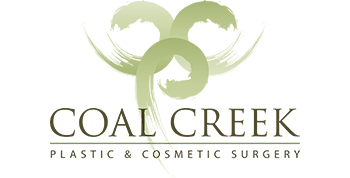When you sit down with your plastic surgeon to discuss your body contouring goals, you may want to ask him or her, the specific differences between liposuction and tummy tuck (aka Abdominoplasty). For many men and women, a possible combination liposuction plus abdominoplasty can also create enhanced results that meet or exceed expectations.
What is a tummy tuck?
Tummy tuck surgery, also known as abdominoplasty, removes excess fat and skin and, in most cases, restores weakened or separated muscles creating an abdominal profile that is smoother and firmer.
A flat and well-toned abdomen is something many of us strive for through exercise and weight control. Sometimes these methods cannot achieve our goals.
Even individuals of otherwise normal body weight and proportion can develop an abdomen that protrudes or is loose and sagging. The most common causes of this include:
- Aging
- Heredity
- Pregnancy
- Prior surgery
- Significant fluctuations in weight
What tummy tuck surgery can’t do:
A tummy tuck is not a substitute for weight loss or an appropriate exercise program.
Although the results of a tummy tuck are technically permanent, the positive outcome can be greatly diminished by significant fluctuations in your weight. For this reason, individuals who are planning substantial weight loss or women who may be considering future pregnancies would be advised to postpone a tummy tuck.
A tummy tuck cannot correct stretch marks, although these may be removed or somewhat improved if they are located on the areas of excess skin that will be excised.
What is Liposuction?
The Liposuction Advantage
- One treatment may be all you need to reshape problem areas
- Treat more areas—and larger areas—in one procedure
- May be performed with either local or general anesthesia
- More consistent and predictable result than noninvasive treatments
Liposuction, sometimes referred to as “lipo” by patients, slims and reshapes specific areas of the body by removing excess fat deposits and improving your body contours and proportion.
What liposuction can treat:
- Thighs
- Hips and buttocks
- Abdomen and waist
- Upper arms
- Back
- Inner knee
- Chest area
- Cheeks, chin and neck
- Calves and ankles
Liposuction can be performed alone or along with other plastic surgery procedures, such as a facelift, breast reduction or a tummy tuck.
What liposuction can’t do:
Liposuction is not a treatment for obesity or a substitute for proper diet and exercise.
It is also not an effective treatment for cellulite—the dimpled skin that typically appears on the thighs, hips and buttocks—or loose saggy skin.
It is important to gather as much useful information as possible to help you make the best decision for your individual situation.
What’s the difference between a tummy tuck and liposuction?
Although sometimes referred to interchangeably as similar treatments to help slim the waistline, liposuction and a tummy tuck are definitely not one and the same.
Liposuction is a body contouring procedure that uses suction to remove isolated pockets of subcutaneous fat that aren’t responding to diet and exercise. On its own, liposuction can help get rid of pesky love handles, back rolls and belly fat, but this treatment won’t be able to address excess skin or muscle laxity that often results following a pregnancy or massive weight loss. The strength of liposuction, is that significant areas of the body may be addressed with a few, small scars. Skin and muscle are not manipulated, so recovery tends to be swifter than abdominoplasty. However, the weakness of liposuction, is that skin and muscle are not manipulated, so loose skin, or separated muscles are not corrected with liposuction.
A tummy tuck or abdominoplasty, on the other hand, does remove excess skin while tightening loose or separated abdominal muscles to achieve a smooth, toned physique. The strength of the tummy tuck, is that skin, fat and muscle are addressed. It is truly a restructuring of the abdomen and its presentation. The weakness of the tummy tuck, is that there are longer scars, and usually a longer, more painful recovery than that with liposuction. There may be surgical drains after the procedure. There is usually a weight lifting restriction after surgery which can interfere with gym work-outs or even employment responsibilities.
Ask you surgeon to explain how each procedure would affect your specific body type and outcome goals.
Choosing a plastic surgeon for your body contouring procedure
If you’re considering a body contouring procedure, make sure you choose a board-certified plastic surgeon whom has ample experience performing these types of surgeries. The surgeon should also have a favorable reputation in the community and at local hospitals. It is important to find a surgeon who will perform a proper evaluation of your body and discuss you specific goals. The surgeon must be skilled in the operating room, and should maintain a supportive office environment to assist you throughout your body contouring journey and recovery.
Original Article available here



